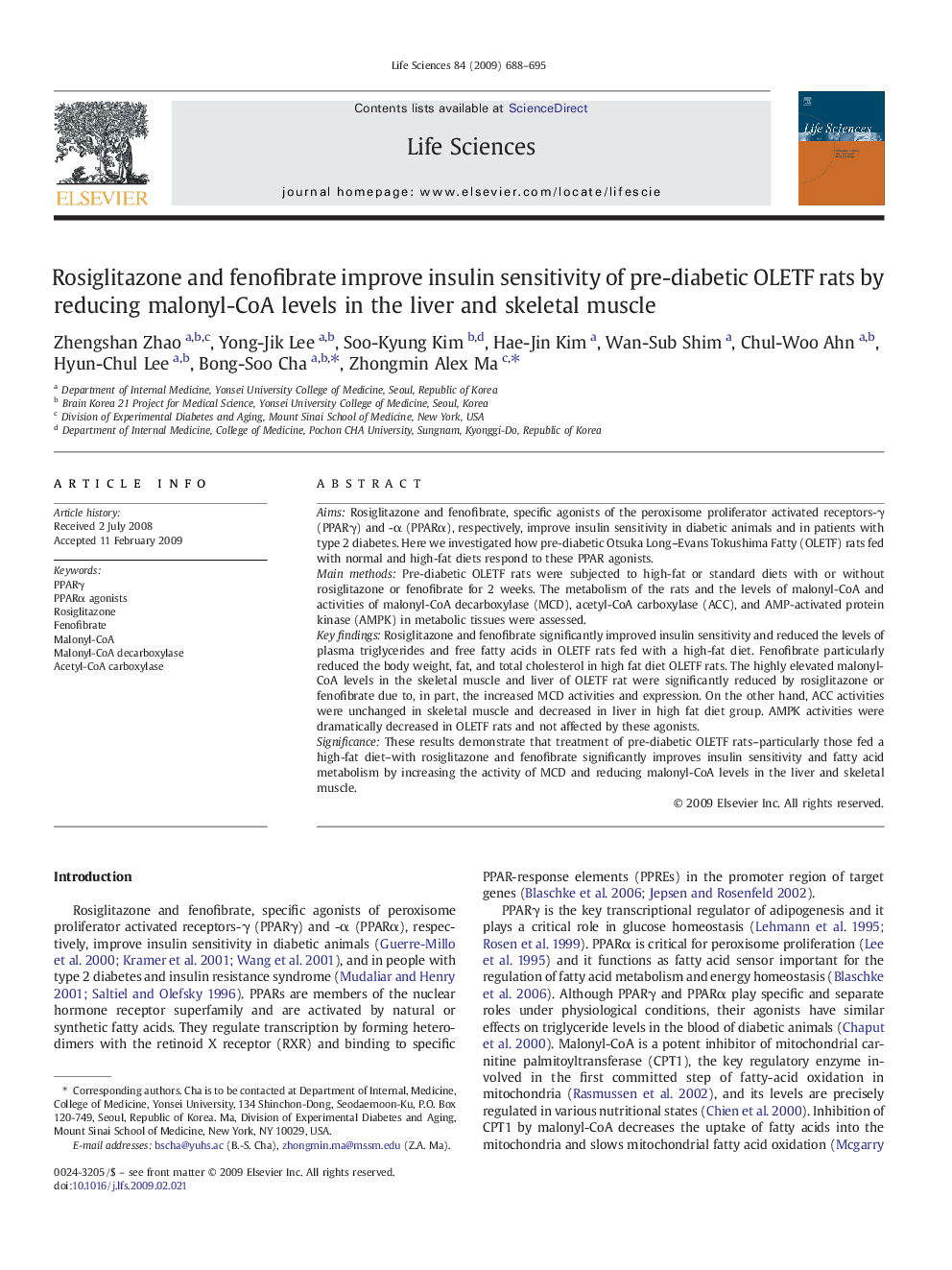| Article ID | Journal | Published Year | Pages | File Type |
|---|---|---|---|---|
| 2552082 | Life Sciences | 2009 | 8 Pages |
AimsRosiglitazone and fenofibrate, specific agonists of the peroxisome proliferator activated receptors-γ (PPARγ) and -α (PPARα), respectively, improve insulin sensitivity in diabetic animals and in patients with type 2 diabetes. Here we investigated how pre-diabetic Otsuka Long–Evans Tokushima Fatty (OLETF) rats fed with normal and high-fat diets respond to these PPAR agonists.Main methodsPre-diabetic OLETF rats were subjected to high-fat or standard diets with or without rosiglitazone or fenofibrate for 2 weeks. The metabolism of the rats and the levels of malonyl-CoA and activities of malonyl-CoA decarboxylase (MCD), acetyl-CoA carboxylase (ACC), and AMP-activated protein kinase (AMPK) in metabolic tissues were assessed.Key findingsRosiglitazone and fenofibrate significantly improved insulin sensitivity and reduced the levels of plasma triglycerides and free fatty acids in OLETF rats fed with a high-fat diet. Fenofibrate particularly reduced the body weight, fat, and total cholesterol in high fat diet OLETF rats. The highly elevated malonyl-CoA levels in the skeletal muscle and liver of OLETF rat were significantly reduced by rosiglitazone or fenofibrate due to, in part, the increased MCD activities and expression. On the other hand, ACC activities were unchanged in skeletal muscle and decreased in liver in high fat diet group. AMPK activities were dramatically decreased in OLETF rats and not affected by these agonists.SignificanceThese results demonstrate that treatment of pre-diabetic OLETF rats–particularly those fed a high-fat diet–with rosiglitazone and fenofibrate significantly improves insulin sensitivity and fatty acid metabolism by increasing the activity of MCD and reducing malonyl-CoA levels in the liver and skeletal muscle.
